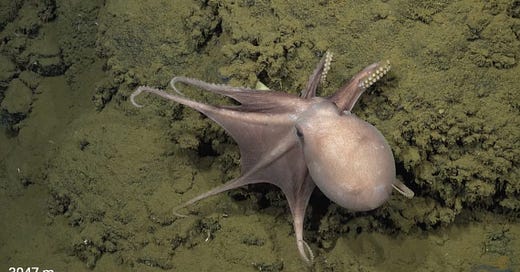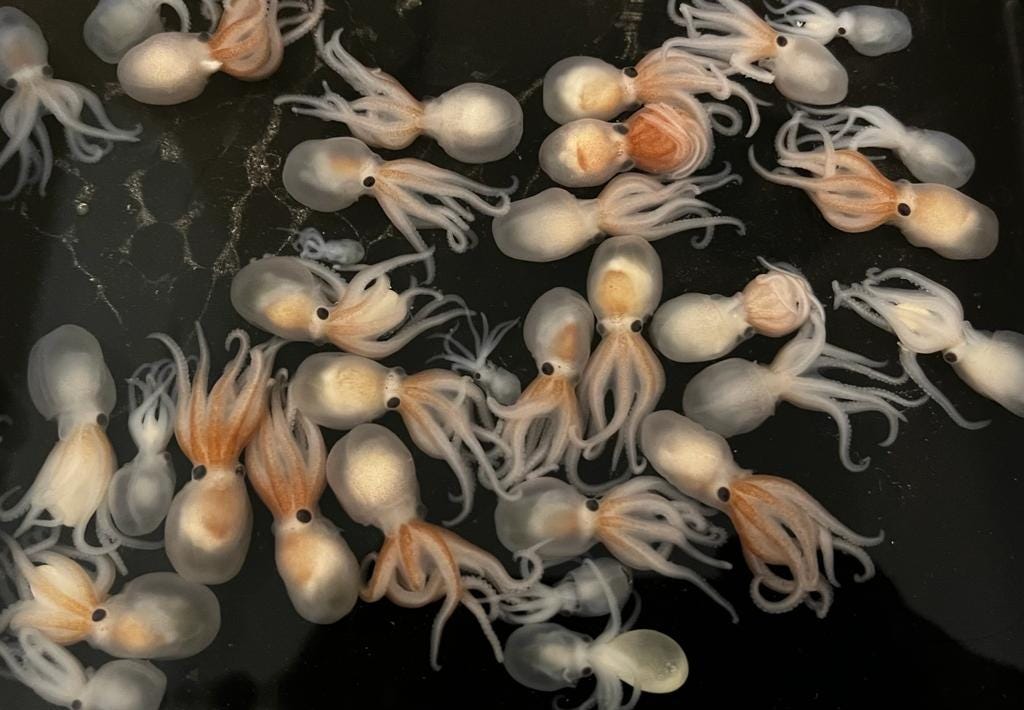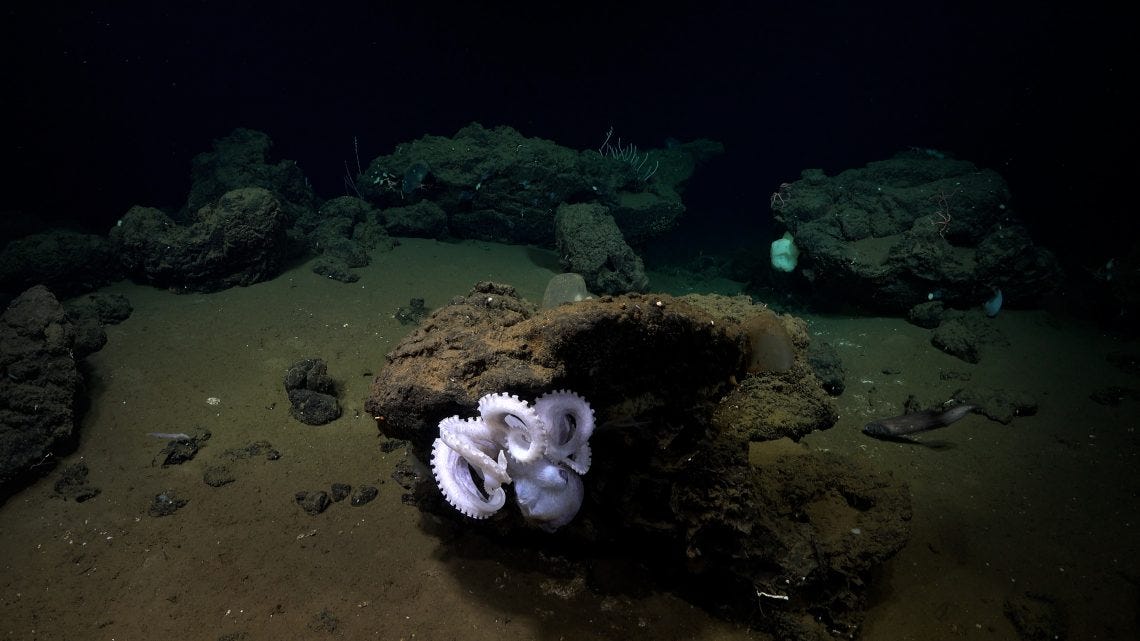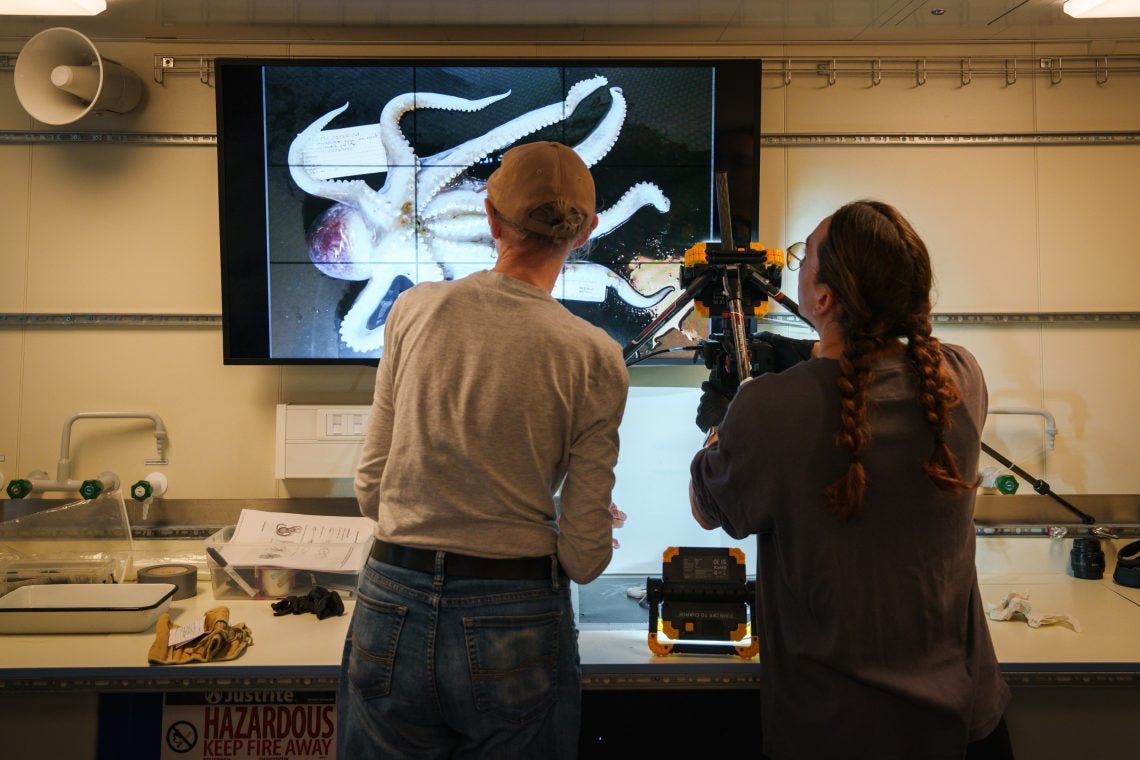DISCOVERING NEW SPECIES AND EXPLORING DEEP-SEA MICROBIOMES
Ten to 30 million species are estimated to exist on our planet, yet only ~1 million of these have been formally described. These estimates do not include the vast majority of microbial life, let alone how microbes interact with animals. A major goal of scientific discovery is to understand not only how many biological species exist but how symbioses form and evolve. Scientific collections play an important role in helping scientists identify new species by allowing us to examine morphological characteristics and unique features that distinguish one species from another. We also rely on genetic material, such as DNA, to look more deeply into the genes that shape physical traits we can (and sometimes cannot) observe with the naked eye.
Our understanding of how animals survive and thrive in their respective environments has revolutionized in recent years. We now know that microbial life- bacteria, viruses, fungi, and other microscopic life forms – is an important part of the animal ecosystem and can serve essential roles in the gut, skin, and reproductive tract. The assemblage of microbes within specific environments, termed a “microbiome,” can provide key services, such as converting indigestible material into accessible nutrients within an animal intestine. In fact, host-associated microbes are often referred to as a “second genome” because they provide an extensive repertoire of genes that can benefit their hosts. Helpful microbes can also colonize environments like the skin or the reproductive tract and prevent harmful bacteria from establishing their own communities.
As we descend with the ROV SuBastian to places like the Dorado Outcrop, we seek a deeper understanding of species diversity and the unique microbiomes that help organisms like octopus thrive in such extreme environments. On our first dive, we encountered a brilliant array of animal life forms, including hundreds of octopus brooding their eggs, searching for mates, and living their deep-sea lives in an environment few of us would find hospitable. Who are these octopus? And how do they manage to make a living on these rocky outcrops over 3000 meters below the ocean surface?
To answer these questions, we are using ROV SuBastian’s exceptional technology to gather footage and specimens for further study. In the past, methods such as dredging might have been used to indiscriminately collect broad swaths of deep-sea material for study on land, but today we benefit from the advanced digital and robotic technology that allows us to be more selective with scientific collections. We can identify specific individuals that will be most useful for answering important questions and carefully collect these without disturbing entire communities or ecosystems. Animals collected during this expedition are already providing key insights into the reproductive biology and development of deep-sea octopus through our careful examination of these specimens. The specimens will be preserved for future scientists to study at the Centro de Investigación Ciencias del Mar y Limnología.
In addition, examination of the morphological characters of these enigmatic animals will allow the species to be named: only when you can say what species you are studying are you able to convey information about the animal. Knowledge of the species’ anatomy will enhance our use of the specimens we collect to investigate the octopus microbiome. We do not yet know what, if any, bacteria contribute to the microbiome of octopus living on the Dorado Outcrop, but the scientific specimens now in hand give us the ability to address questions that would otherwise be forever unknown.
Newsletter of the SCHMIDT OCEAN INSTITUTE
The Octopus Odyssey expedition is currently underway in the Pacific Ocean, off the coast of Costa Rica, with the objective of investigating underwater mountains that scientists believe harbor distinctive habitats and biodiversity.
The multidisciplinary science team aims to gain a deeper understanding of the hydrogeology, microbiology, ecology, and geochemistry that potentially contribute to the captivating behaviors observed among clusters of brooding octopus. Additionally, they seek to characterize the life-sustaining services offered by the ecosystems thriving on these seamounts. Join us on this thrilling adventure to uncover more fascinating insights!







